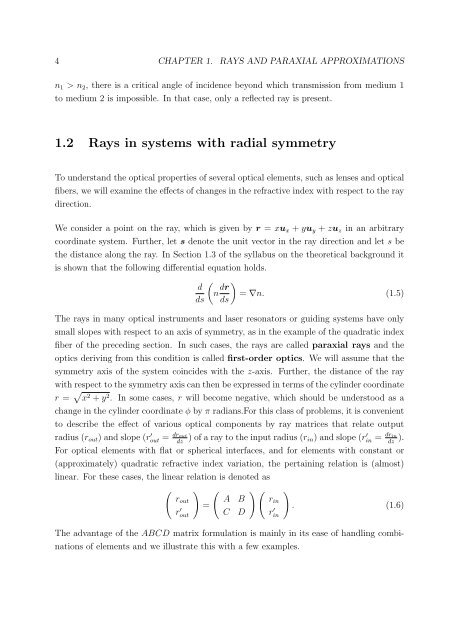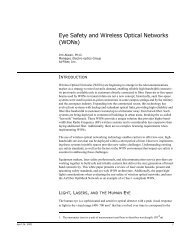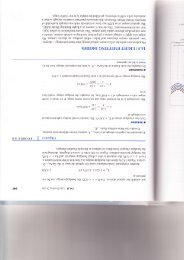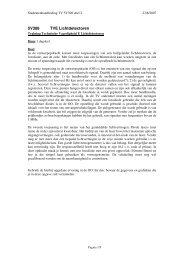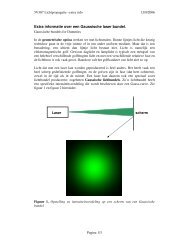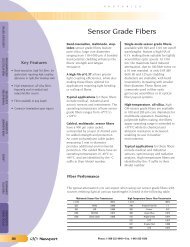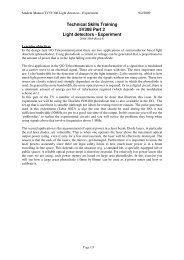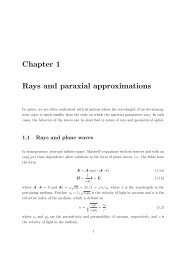Chapter 1 Rays and paraxial approximations - OED
Chapter 1 Rays and paraxial approximations - OED
Chapter 1 Rays and paraxial approximations - OED
You also want an ePaper? Increase the reach of your titles
YUMPU automatically turns print PDFs into web optimized ePapers that Google loves.
4 CHAPTER 1. RAYS AND PARAXIAL APPROXIMATIONS<br />
n1 > n2, there is a critical angle of incidence beyond which transmission from medium 1<br />
to medium 2 is impossible. In that case, only a reflected ray is present.<br />
1.2 <strong>Rays</strong> in systems with radial symmetry<br />
To underst<strong>and</strong> the optical properties of several optical elements, such as lenses <strong>and</strong> optical<br />
fibers, we will examine the effects of changes in the refractive index with respect to the ray<br />
direction.<br />
We consider a point on the ray, which is given by r = xux + yuy + zuz in an arbitrary<br />
coordinate system. Further, let s denote the unit vector in the ray direction <strong>and</strong> let s be<br />
the distance along the ray. In Section 1.3 of the syllabus on the theoretical background it<br />
is shown that the following differential equation holds.<br />
<br />
d<br />
n<br />
ds<br />
dr<br />
<br />
= ∇n. (1.5)<br />
ds<br />
The rays in many optical instruments <strong>and</strong> laser resonators or guiding systems have only<br />
small slopes with respect to an axis of symmetry, as in the example of the quadratic index<br />
fiber of the preceding section. In such cases, the rays are called <strong>paraxial</strong> rays <strong>and</strong> the<br />
optics deriving from this condition is called first-order optics. We will assume that the<br />
symmetry axis of the system coincides with the z-axis. Further, the distance of the ray<br />
with respect to the symmetry axis can then be expressed in terms of the cylinder coordinate<br />
r = x 2 + y 2 . In some cases, r will become negative, which should be understood as a<br />
change in the cylinder coordinate φ by π radians.For this class of problems, it is convenient<br />
to describe the effect of various optical components by ray matrices that relate output<br />
radius (rout) <strong>and</strong> slope (r ′ out = drout<br />
dz ) of a ray to the input radius (rin) <strong>and</strong> slope (r ′ in = drin<br />
dz ).<br />
For optical elements with flat or spherical interfaces, <strong>and</strong> for elements with constant or<br />
(approximately) quadratic refractive index variation, the pertaining relation is (almost)<br />
linear. For these cases, the linear relation is denoted as<br />
<br />
rout<br />
=<br />
A<br />
C<br />
B<br />
D<br />
r ′ out<br />
rin<br />
r ′ in<br />
<br />
. (1.6)<br />
The advantage of the ABCD matrix formulation is mainly in its ease of h<strong>and</strong>ling combi-<br />
nations of elements <strong>and</strong> we illustrate this with a few examples.


